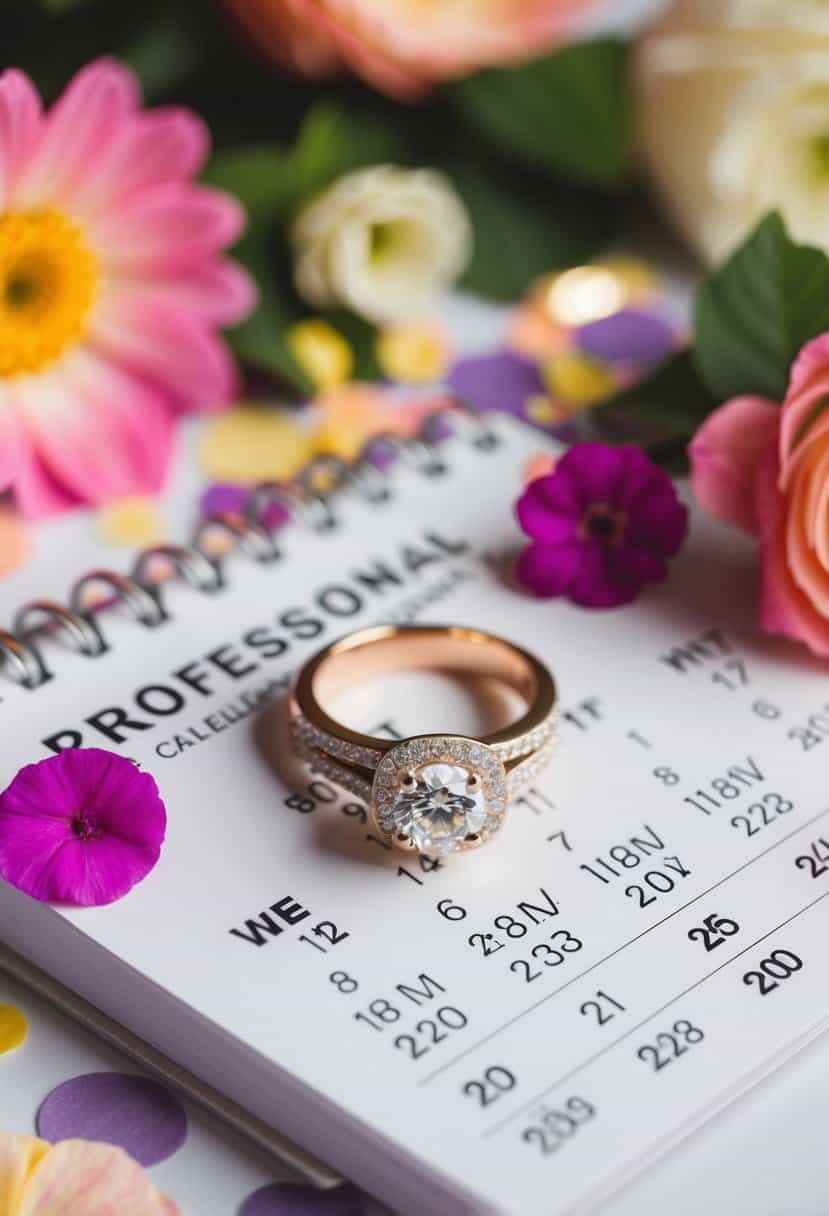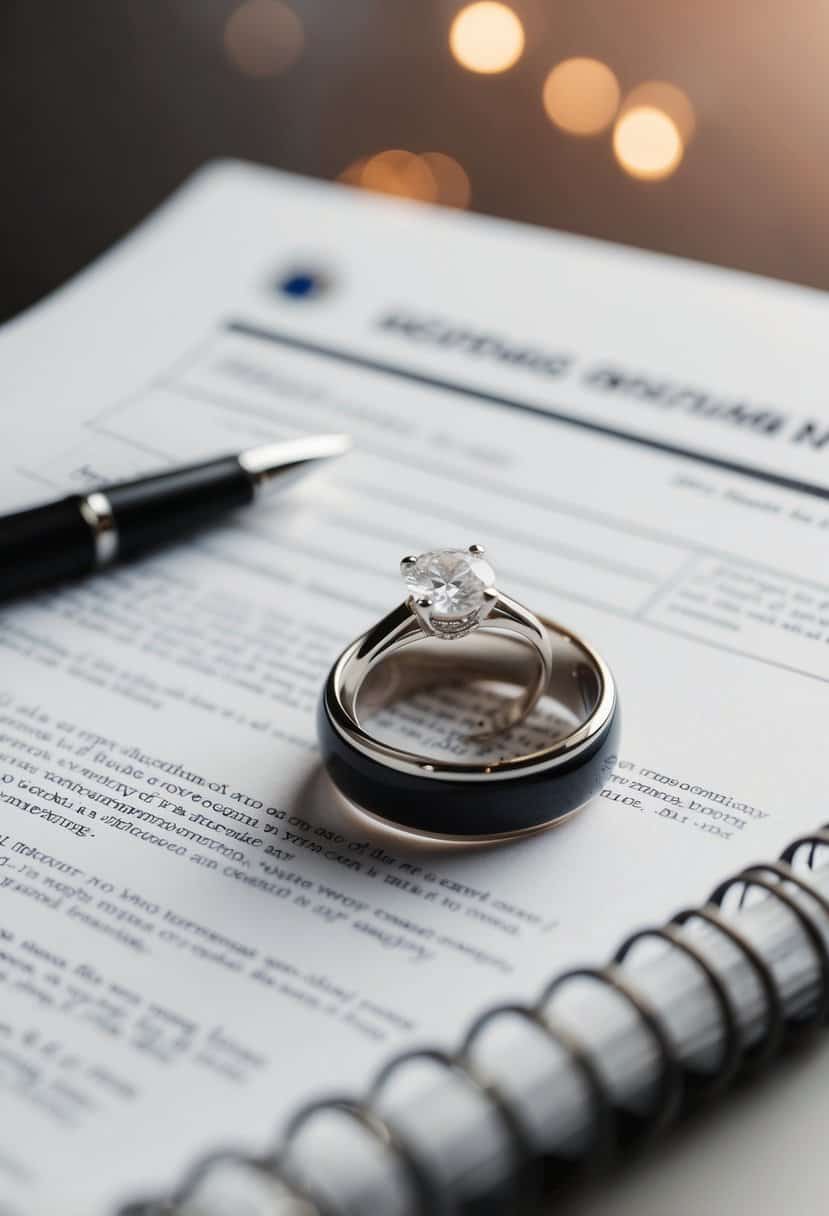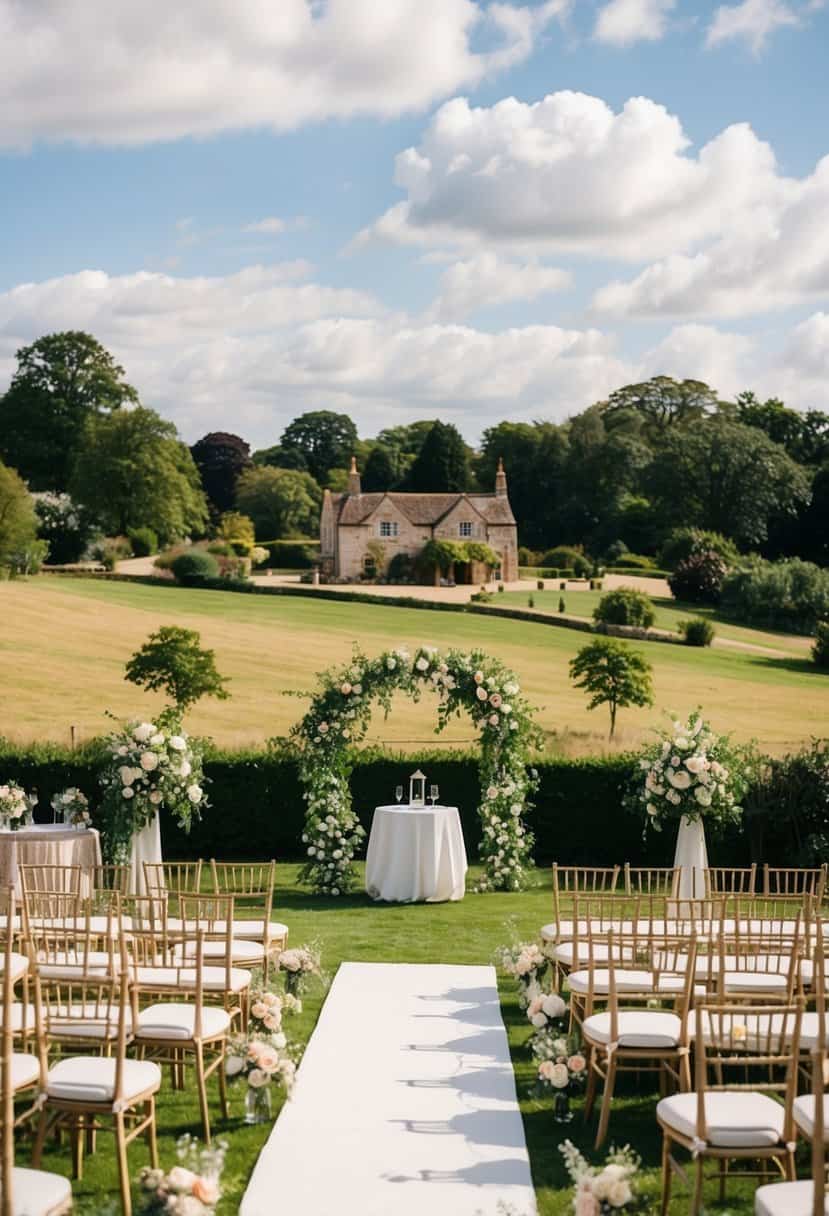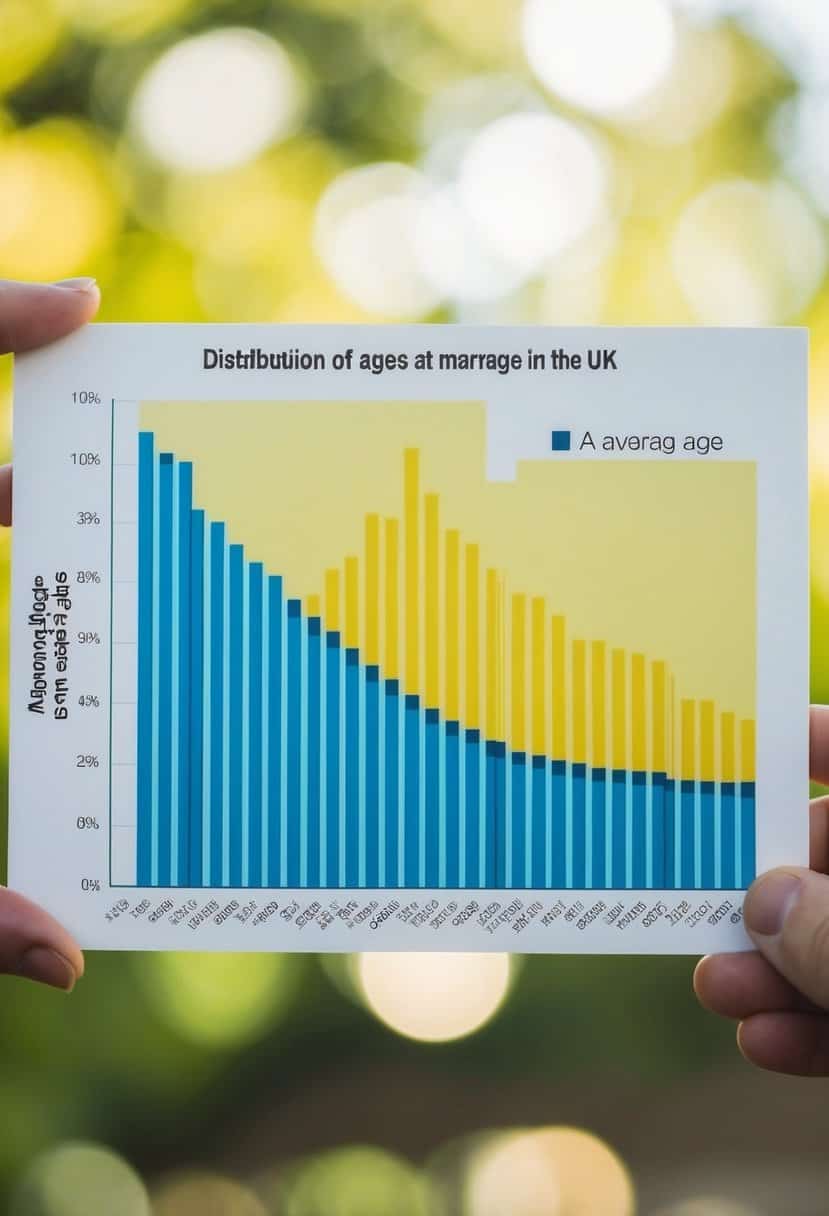What is the Average Age to Get Married in the UK? Insights and Trends
Wondering when people usually tie the knot in the UK? Marriage trends have changed over the years, and it’s interesting to see how age plays a role in this.
In England and Wales, the trend shows that people are waiting longer to get married. In 2020, men decided to marry at an average age of 35.3 years, while women did so at 33.2 years. This reveals a move towards older ages compared to past decades.

So, what does this mean for you? It shows that there’s no rush to get to the altar. People are prioritizing personal growth, careers, and experiences before saying “I do.” This shift in priorities can contribute to stronger relationships and more stable marriages.
Knowing this trend can ease any pressure you might feel about marrying by a certain age. Take comfort in understanding that waiting until your mid-30s to get married is quite common now, and it gives you plenty of time to prepare for this big step. With this knowledge, you’ll have the freedom to make choices that are right for you and your future.
Demographics of Marriage in the UK

When looking at marriage in the UK, it’s clear that patterns have shifted over time. You’ll find that people are marrying later in life, and marriage rates differ by demographics, reflecting broader societal changes.
Average Age at Marriage
You’ll notice that the average age for marriage has been rising. For example, in 2020, men marrying women were around 39.7 years old, while women were typically younger. This trend of marrying later has been consistent since the 1970s.
Similar trends can be seen in recent years. In 2022, men entering opposite-sex marriages were about 32.7 years old. Women typically married at an average age of 31.2 years. Marrying later might reflect various factors, like higher education levels or career focus.
Marriage Rates by Demographic
Marriage rates have also shown a notable shift. In 2018, there were 234,795 marriages in England and Wales. The statistics revealed decreasing marriage rates compared to past decades, especially among opposite-sex couples.
Fewer people are choosing to get married, which might be due to changing societal norms. It’s also interesting to note that specific days seem more popular for weddings. In 2022, a significant number of marriages occurred on a Saturday, with July 30 being particularly favored. This highlights how cultural preferences influence marriage trends in the UK.
Legal Aspects of Marriage

In the UK, marriage and civil partnerships have specific legal requirements. The recent law changes impacted the minimum age for both, and it’s important to understand these differences, especially if you’re planning a wedding.
Civil Partnership vs. Marriage
Both civil partnerships and marriages are legally recognized in the UK. Civil partnerships are often chosen by those who want the legal benefits of marriage without certain traditional elements. They provide similar rights and responsibilities as marriage, including inheritance and tax benefits.
Marriages can be performed through religious or civil ceremonies. Civil ceremonies are non-religious and can be conducted at a registrar office or approved venue. Religious ceremonies follow the traditions of a specific faith. Understanding the type of ceremony you prefer is important for your big day.
Marriage and Civil Partnership (Minimum Age) Act 2022
The Marriage and Civil Partnership (Minimum Age) Act 2022 set the minimum age for marriage and civil partnerships at 18. Previously, it was 16 with parental consent. Now, individuals must be 18 or older, removing the need for parental approval for those aged 16 or 17. This change aims to protect young people from being legally bound in relationships too early.
This law means you’ll need to wait until at least 18 to legally marry or register a civil partnership. It’s part of efforts to ensure that every individual entering these commitments does so willingly and with full understanding. More details about this change can be found on the UK Government’s legal announcement.
Ceremonies and Venues

When planning your wedding in the UK, you’ll encounter various options for ceremonies and venues. Understanding the differences between religious and civil ceremonies, as well as venue choices, can help you create the special day you’re dreaming of.
Religious vs. Civil Ceremonies
In the UK, you can choose between a religious marriage or a civil marriage. A religious marriage often takes place in a church, such as the Church of England or Church in Wales. These ceremonies are typically conducted by a member of the clergy and include traditional religious elements.
On the other hand, civil ceremonies are non-religious and can occur in a variety of settings. They are conducted by a registrar and provide greater flexibility concerning location and style. Some prefer civil ceremonies for their relaxed atmosphere and modern approach.
When deciding between a religious or civil ceremony, consider your personal beliefs and the atmosphere you want for your wedding. Each type offers unique traditions and experiences.
Choice of Wedding Venues
Choosing a venue is a crucial step in planning your wedding. Venues in the UK vary from grand castles and stately homes to intimate gardens and modern city hotels. Your venue will greatly influence the mood and cost of your wedding.
Religious ceremonies often occur in churches or chapels. For civil ceremonies, you have the freedom to choose from places like registry offices, hotels, or even outdoor locations. Each option offers different benefits and constraints, like the number of guests you can invite or the time restrictions.
Think about the size of your guest list, your budget, and the overall theme of your wedding when picking a venue. Your choice will shape your wedding day and create lasting memories.
Recent Trends Affecting Marriages

In recent years, marriages have been influenced by various social changes. The COVID-19 pandemic, increasing cohabitation, and trends in same-sex marriage rates have all played significant roles. Here’s a closer look at these trends and how they might affect your view on marriage.
Impact of COVID-19 on Marriage
The coronavirus pandemic brought unexpected changes to how people approach marriage. During lockdowns, many weddings were postponed or canceled due to restrictions on gatherings.
For some, this delay provided more time for decision-making, leading to stronger commitments. On the other hand, some couples found the stress of lockdown life highlighted compatibility issues, resulting in delayed or avoided marriages altogether. You might find it interesting that this period also saw a rise in virtual weddings, giving a new meaning to intimate ceremonies.
Rise in Cohabitation
Cohabitation has become more common, reflecting changing social attitudes. Many people choose to live together before marriage, or even as an alternative to it. This trend often stems from practical reasons like financial savings or a sense of testing compatibility.
As you consider marriage, it’s worth noting that living together first can provide insights into daily living habits, financial management, and mutual goals.
Changes in Same-Sex Marriage Rates
Same-sex marriage rates have continued to evolve, especially with increased legal recognition globally. In recent years, more same-sex couples are getting married, and this has contributed positively to marriage rates overall.
In the UK, same-sex marriages now often happen at older ages compared to opposite-sex couples, with many focusing on stability and lasting partnership. If you or someone you know is part of the LGBTQ+ community, this reflects a broader acceptance and support for diverse family structures.
Statistics and Data

Marriage statistics in the UK reveal interesting trends over the years. You’ll find how the Office for National Statistics reports changing average marriage ages, as well as some insights into interpreting this data.
Office for National Statistics Reports
The Office for National Statistics gives essential details on marriage trends in England and Wales. In 2020, men typically married at 35.3 years, while women did so at 33.2 years. For same-sex couples, the figures were slightly older: men at 38.1 years and women at 34.6 years.
A lower percentage of couples were both marrying for the first time in 2020 compared to previous years, standing at 63.2%. These figures reflect a trend where more individuals marry at a later age compared to previous decades, highlighting societal shifts.
Interpreting Marriage Data
Interpreting marriage data takes a bit of thought. The rise in average age at marriage hints at cultural and economic influences. People are possibly pursuing higher education, establishing careers, or focusing on personal growth first.
The popular choice for wedding days also shows patterns. For example, in 2022, Saturday remained the most favored day, accounting for 43.6% of all marriages. This could relate to work schedules and the convenience of a weekend ceremony.
Understanding these statistics helps you grasp how societal norms influence when couples decide to marry. This knowledge might help in planning your own wedding or understanding broader trends in marriage.



